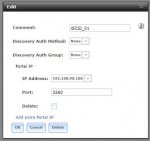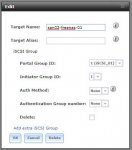SmoothRunnings
Dabbler
- Joined
- Aug 18, 2016
- Messages
- 48
I saw a recent post for this issue here from 2017 which explained that multipath was the issue in ESXi 6.5. When I created another VMKernel NIC within the same subnet the FeeNAS iSCSI continues to only show up as 1 device. Does anyone have any other suggestions?
I can create a datastore and looks like I can use it, I just would like to make sure there are no headaches down the road with the Normal, Degraded device issue.
Thanks,
I can create a datastore and looks like I can use it, I just would like to make sure there are no headaches down the road with the Normal, Degraded device issue.
Thanks,




